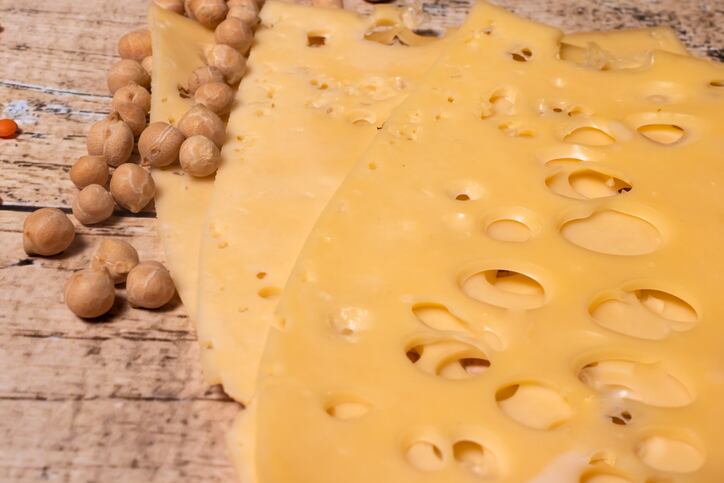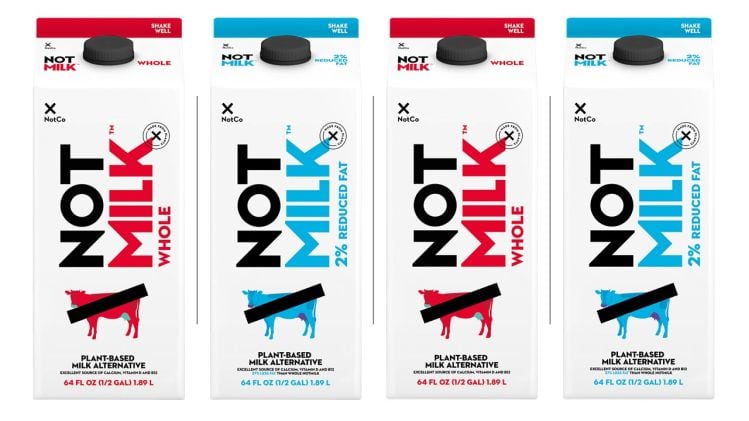So how are consumer expectations in these categories evolving, and what formulation challenges do brands still need to address?
FoodNavigator-USA caught up with experts at Cargill and ADM, which both have a broad portfolio of proteins, texturizers, sweeteners, and other ingredients used in plant-based dairy.
‘There’s actual science, and then there’s internet science…’
Right now, everyone is looking at “how to capture some of the lightning” associated with plant-based dairy, says Mark Fahlin, business development manager for dairy and plant-based at Cargill, who says there’s still work to do when it comes to ‘melt and stretch’ in plant-based cheese, while for plant-based yogurt, “the industry is still finding ways to make it taste better.”
The largest category in the set – plant-based milk – however, is already in what he calls the fourth phase of evolution. Phase one was primarily soy-based, and the taste “wasn’t great,” he claims. Phase two – which helped the category really reach an inflection point – was characterized by step changes in taste and texture. Phase three was characterized by variety – everything from cashewmilk to oatmilk.
Phase four, which we’re in now, he says, is characterized by demand for even greater variety, including more blends, protein fortification, and interest in other nutrients such as choline, DHA, and vitamin D, trends which he says we’ll also see in plant-based yogurts, “where protein is often lacking right now.”
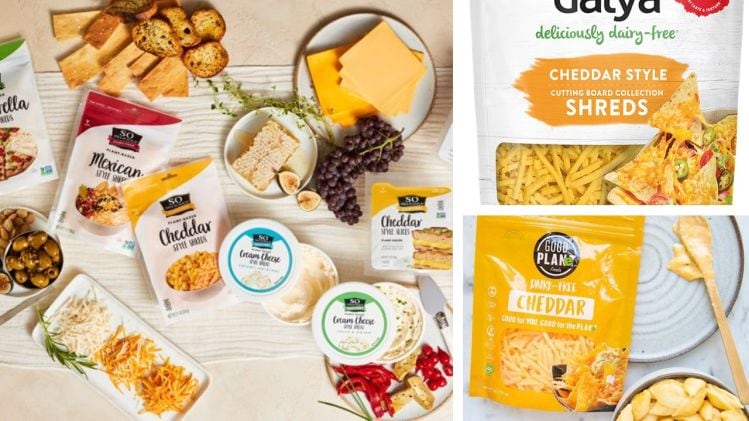
‘Cheese is the most technically challenging space in dairy alternatives’
When it comes to ingredients lists, the shorter and more pronounceable the better, he adds: “There’s actual science, and then there’s internet science… so for example, carrageenan is still something some customers want to avoid, but formulators love carrageenan and they’re bummed they can’t all use it.”
When it comes to dairy-free cheese, however, “there’s a little more forgiveness on the ingredients label than you’d get with milks, because people just want it to function [like dairy cheese],” observes senior technical account manager Christine Addington.
“Carrageenan is still widely used in vegan cheese as it really helps firming up blocks to make them more shreddable, and it helps with melt, so replacing it is hard. We’ve worked with customers that say they only want to work with proteins, oils and water, but they’re not getting any kind of functionality.”
If you want an artisanal cream cheese type product made with cultured nuts, that’s one thing, but if you want something that’s going to function like a processed dairy cheese slice in a burger, or in a grilled cheese sandwich, or on top of a pizza, there are significant challenges around melt and stretch that right now necessitate the use of starches and sometimes hydrocolloids too, she says.
“Cheese is the most technically challenging space in dairy alternatives. Dairy proteins – casein micelles - add so much functionality to cheese, they provide structure, emulsification, and a clean mouthfeel, so when you remove them, you have to find ways to replicate this as plant proteins don’t behave in this way, so you look to starches and hydrocolloids.”
(Read more about Change Foods, New Culture, Remilk, Legendairy Foods, and Those Vegan Cowboys, who are developing vegan cheeses made with real dairy proteins, minus the cows.)
‘I haven’t seen too much on the market with any kind of stretch…’
Thus, while some vegan cheeses such as Miyoko’s Farmhouse Cheddar feature navy beans and chickpeas high up the ingredient list; most vegan cheese slices, blocks, and shreds feature water, oil, and starch as the first three ingredients (Violife, Daiya, Follow Your Heart, Good Planet, So Delicious), although pea or potato protein is sometimes added a bit further down the ingredients list, along with hydrocolloids such as carrageenan or xanthan gum.
“We’re looking at 20 different starches, different fibers, several different hydrocolloids, and also partnering very closely with our oils group to get the melt profile right,” says Addington.
She adds: “We formed a vegan cheese team a couple of months ago as we were getting requests from customers maybe once or twice a week about how do we get better stretch or better mouthfeel; we need to really understand how these ingredients are interacting and what they are each bringing to the table.”
If you ask consumers what’s lacking in current vegan cheese products, she says, ‘They’ll ask, ‘Where is the stretch?’ I haven’t seen too much on the market with any kind of stretch.”
While consumers are fairly neutral on starch, some customers don’t want to see the word ‘modified’ on a label, she says: “In the vegan cheese space you’ll still see a lot of modified starch on labels, so we’re getting requests for native starch.”
Taste and melt profile
As for fats, she says, if you’re eating cheese raw, you need fats that deliver a certain mouthfeel and something sufficiently firm that can be sliced, for example. But if you want to make a grilled cheese sandwich with a certain melting profile, other factors come into play.
Different hydrocolloids have gelling properties at different temperatures, while combining oils with different melting profiles is also something formulators at Cargill are working on, she adds.
When it comes to taste, meanwhile, “Starches and pea protein don’t taste like dairy, and neither does coconut oil [which is often a core ingredient in plant-based cheese],” says Addington. “So we’ve partnered with some flavor suppliers to really bring in those Cheddar or Mozzarella notes.”
Plant-based yogurt
Plant-based yogurts are perhaps the second most challenging category in plant-based dairy from a formulation perspective, she says, noting that coconut-based products – which have higher fat levels – lend themselves well to this space as they deliver an appealing mouthfeel and more dessert-like flavor. Almond butter – as opposed to almond flour – can also deliver a creamier texture.
“Our simpure native tapioca starch really works well in plant-based yogurt as it’s highly process tolerant and also has a whitening effect, plus it adds a creamy mouthfeel. We’re also seeing chicory root fibers and citrus fibers used in this space that can serve as fat mimetics, plus our customers are looking to add more fiber because consumers are asking for it.”
Oats have “high consumer appeal and some nice flavor characteristics,” but oat protein is not very soluble, which can lead to grittiness and sandiness in oat-based yogurt applications, she says.
Plant-based milk by numbers, 52 weeks to Jan 24, 2021 (SPINS)
US retail sales of plant-based milk rose 21.9% to $2.542bn in measured channels in the year to Jan. 24, 2021, according to new data shared with FoodNavigator-USA from SPINS.
The key segments are: (figures below exclude included blended products)
- #1 Almondmilk (+16.9% to $1.59bn): Refrigerated +17%, Shelf-stable +15.8%
- #2 Oatmilk (+219.3% to $264.1m): Refrigerated +218.6%, Shelf-stable +85.9%
- #3 Soymilk (-0.9% to $201.4m): Refrigerated -0.2%, Shelf-stable +11.3%
- #4 Coconutmilk (+25.9% to $134.6m): Refrigerated +8.3%, Shelf-stable +68.6%
- #5 Peamilk (+15.8% to $45.2m): Refrigerated +16.4%, Shelf-stable -2.1%
- #6 Ricemilk (+4.2% to $44.68m): Refrigerated -8.5%, Shelf-stable +12.2%
Plant-based cheese and yogurt by numbers, 52 weeks to Feb 21, 2021 (SPINS)
- Plant-based cheese: +43.6% to $233.9m
- Plant-based yogurt: +16.4% to $346.2m
Plant-based milks: 'Not all plant proteins were created equal...'
In plant-based milks and creamers, “not all plant proteins were created equal,” says Addington. “If you want to avoid grittiness the more soluble the better, and you also need an emulsifier to help combine the fat and water, so lecithin works great here, plus it also helps deliver a creamy mouthfeel, where starches can also help if you want a more indulgent mouthfeel.”
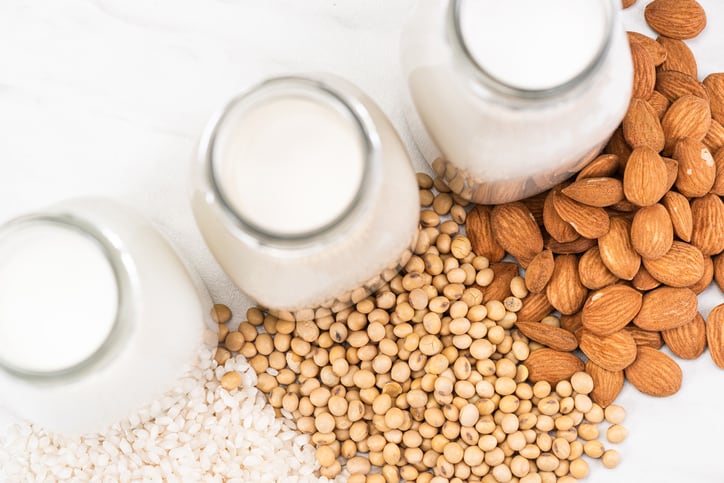
When it comes to consumers’ sensory expectations meanwhile, they can differ a lot between, say, a plant-based milk, versus a plant-based protein nutritional shake, which might have 20g of protein, says Addington.
“PURIS [in which Cargill is an investor and partner] has one of the most soluble pea proteins on the market, and it’s also very clean-tasting based on the sensory testing we’ve done. It also has some emulsifying properties, but because it’s not a complete protein, formulators are often adding small amounts of rice or pumpkin protein.”
Plant-based frozen desserts: High protein, low sugar products present challenges
While in general, plant-based frozen desserts are pretty good, she says, “there are some limitations around high protein, low sugar products, because you can get a lot of iciness because the plant proteins performs differently and you can get more shrinkage.”
Trends to watch: Hybrid milks, microbial proteins
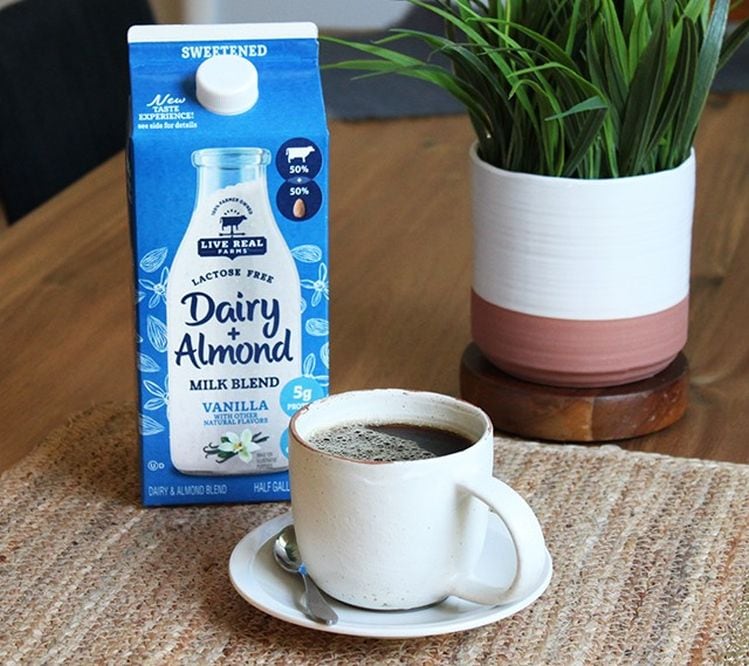
As for trends she’s monitoring, the ‘hybrid’ trend – combining dairy and plant-based milks – is something to watch in the milks and creamers category, she says (read about one example here), although from a marketing perspective, some commentators have expressed doubts about its appeal (the best of both worlds, or the worst of both worlds?).
“You get dairy protein that’s highly soluble, but the health and sustainability halo of plants as well,” says Addington. “It really caters to the flexitarian lifestyle, it’s just for people that are trying to incorporate more plants into their lifestyle and eat more healthily.”
As for novel proteins produced via microbial fermentation, Addington says this is a “super interesting” area of opportunity for dairy alternatives. “I think fermentation is a very sustainable way to produce products and we get a lot of requests from our customers around sustainability.”
(Checkout our recent story on Superbrewed Food, which is planning to launch dairy-free cheeses featuring a novel bacterial protein by the end of the year.)
ADM: Consumption of dairy alternatives 'more about leading a healthy lifestyle than addressing a specific issue'
At ADM, says VP marketing Brad Schwan, “We're seeing a ton of consumer interest in plant-based dairy.”
He adds: "If you ask consumers - and we have done some proprietary research at ADM on this - why are you buying these products, then 58% say it's about health, followed by environmental concerns and sustainability at 48%.”
But if consumers with milk allergies or lactose intolerance were initially driving the category, they now only represent around a third of buyers, “further showing that consumption of dairy alternatives is more about leading a healthy lifestyle than addressing a specific issue," he says.
Blends of plant proteins
Many consumers, he says, now just have a general belief that 'plant-based' is better for you, he says, while a growing number say they want to incorporate more plant-based protein into their diets.
“A shortcoming of many of the offerings in the marketplace today is that they are under delivering on protein which is really extremely important to consumers.
“Launches [of new products in general] with pea protein have tripled versus four years ago. We see a ton of momentum in pea, but we also seem much more blending of multiple plant protein types.”
While combining plant proteins makes sense for technical reasons - to mask off tastes and balance out amino acid profiles - he says, “There's this consumer intuition that says, 'Protein from a variety of different plants sounds even better to me.'
“So we've developed a chocolate hazelnut ready to drink smoothie that takes pea protein isolate, but then adds in red bean powder and navy bean powder and black bean powder.”
'A trend towards fortification'
He adds: “We also see a trend towards fortification, from high quality plant protein to vitamin D, vitamin C, DHA omega-3s and fibers; those are the things that I think will take dairy alternatives to the next level.”
Indeed, when it comes to specific ingredients consumers would like to consume more of, fiber tops the list, he says.
“I do think that increasing consumer awareness of the microbiome is contributing to the drive for prebiotic fiber, and we expect more activity in fiber and other ingredients that support the microbiome [such as postbiotics] in the dairy alternative space.”
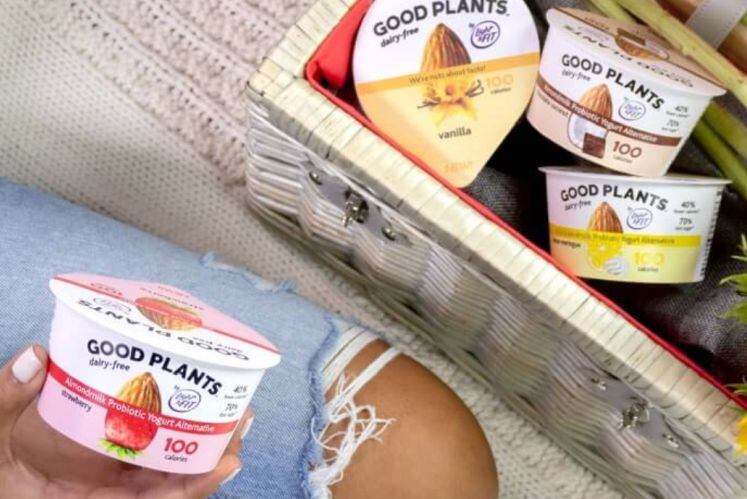
Despite the surge of investment and excitement, not every new entrant to the plant-based dairy category has hit CPG gold, with the first player to launch with a peanutmilk product pulling it from the market in 2019, Danone quietly withdrawing its Good Plants almondmilk yogurt alternative a year after launch, and several emerging plant-based yogurt brands failing to catch fire in the ultra-competitive chilled dairy set.

